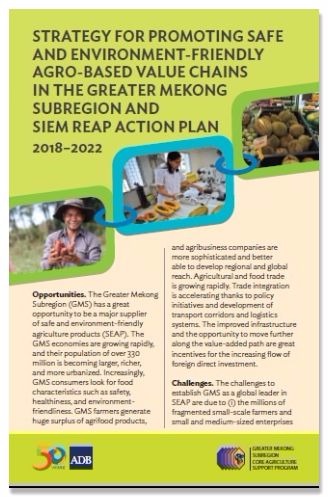2nd Meeting of the GMS Urban Development Working Group
This is the summary of proceedings of the 2nd Meeting of the Greater Mekong Subregion Urban Development Working Group held in Manila, Philippines from 4–5 July 2018.
This is the summary of proceedings of the 2nd Meeting of the Greater Mekong Subregion Urban Development Working Group held in Manila, Philippines from 4–5 July 2018.

This is the summary of proceedings from the 24th Meeting of the Regional Power Trade Coordination Committee (RPTCC-24) on 18 to 20 June 2018 in Nay Pyi Taw, Myanmar.

This study discusses the complex Grievance Redress Mechanism process in the Central Mekong Delta Region Connectivity Project in Viet Nam and tackles involuntary resettlement and environmental safeguards issues.

Applying the Industrial Pollution Projection System is an important first step toward mainstreaming pollution concerns into strategic planning in the Greater Mekong Subregion.
High upfront costs and lack of incentives impede fuel efficiency initiatives in road freight in the Greater Mekong Subregion.

A subregional approach toward safe and environment-friendly agrifood value chains is expected to achieve three main outcomes: greater trade, economies of scale, and inclusive food safety.

This health impact assessment framework serves as a guide to manage health risks and impacts in economic zones of the Greater Mekong Region and address transboundary issues associated with human migration.

This report discusses opportunities for safe and environment-friendly agriculture products in the Greater Mekong Subregion and highlights the Siem Reap Action Plan, 2018–2022.
The Lao People’s Democratic Republic can maximize the potential benefits from the Greater Mekong Subregion’s economic corridors through its national policies, capacities, and implementation arrangements.
Increasing investments in natural capital requires a proper accounting of its economic value for informed policy and decision-making.